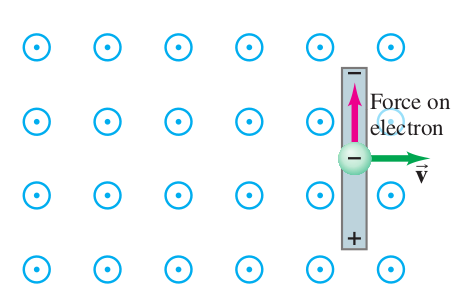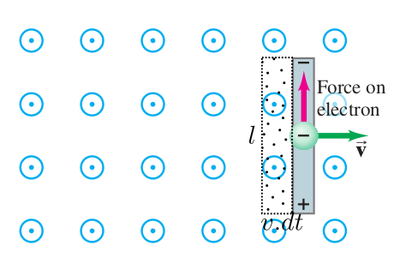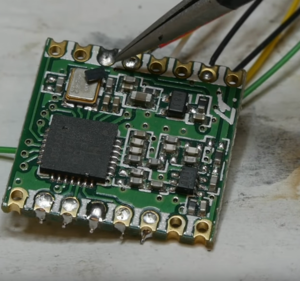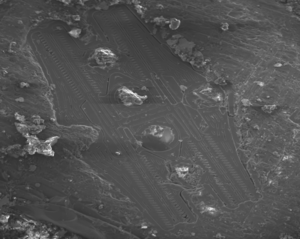Exercise 070519
Problem 1
Derive the induced emf between the ends of a metallic rod of length moving at a constant velocity in a uniform magnetic field using Lorentz force. Verify your result with the Faraday's law of induction.
Solution
The metallic rod can be thought as a container for electrons. As the rod moves in the magnetic field, the electrons also move in the electric field with the same velocity. Thus they experience a force . As the electrons move, they leave a region in the rod which is charge depleted. This creates an electric field. In the steady state, the force due to electric field balances the force due to magnetic field
The flux cut by conductor in time is
The magnitude of the emf induced is then
Problem 2
Recently they switched from crystal oscillators to MEMS oscillators in iphones. This caused a problem, since helium, being so small, can penetrate into silicon, and exposure to Helium at room temperatures breaks the iphone irreversibly.
In order to model how this happens, let's model the (Franklin) bell inside the MEMS as a resistive current carrier, carrying a tiny current of 2.3 A. The design above as 16 carriers that each have 0.686 C/m linear charge density.
(a) What is the average velocity of the carriers? (b) If the helium in the system results in a 10 fold increase in the "resistivity" of our model by mechanically preventing the arms to move, how will be the electric field generated be effected if we drive the circuit at the same current?
Solution
(a)
(b)
thus the arms are exerted 10 times the force, and they break down.





















